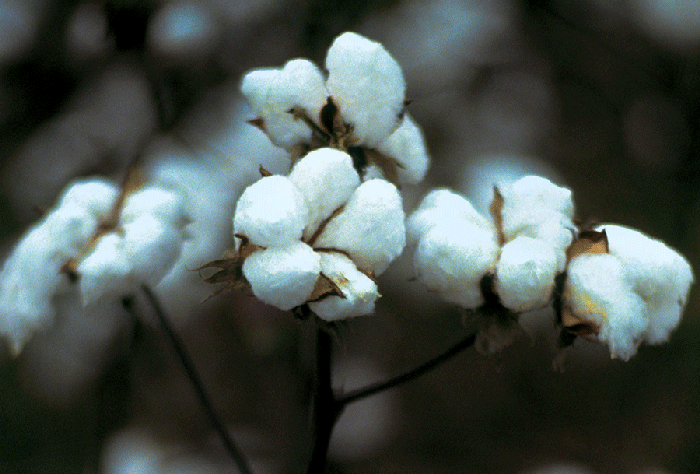
Despite “a problematic planting season” for Mississippi cotton growers, Dr. Darrin Dodds, the state’s Extension cotton specialist, says he’s “cautiously optimistic” the state’s growers “could end up making a very good crop.
“We all know how resilient cotton is,” he said at the joint annual meeting of the Mississippi Boll Weevil Management Corporation and the Mississippi Farm Bureau Federation Cotton Policy Committee. “If we can get a good fall, I think there’s still potential for a very good crop in a lot of areas.
“I’ve been all over the state in recent weeks, and cotton is starting to look good, with blooms in a lot of places, and the crop is finally getting where it needs to be. It’s still behind, but I’m hoping for a fall like we had last year — with some 90 degree to 95 degree days in September and into October, and some rainfall scattered throughout the rest of the season. After that, we need a dry harvest season.’ He recalls 2004, when there was “a really tough spring, with a lot of challenges, and we ended up with a record state average yield of more than 1,000 pounds.”

RICHY BIBB, left, Tunica, Miss., producer, and Pat Woods, Byhalia, Miss., producer, were among those attending the joint annual meeting of the Mississippi Boll Weevil Management Corporation and the Mississippi Farm Bureau Federation Cotton Policy Committee.
This year’s crop has been beset by problems, Dodds says, with extended periods of wet, cool weather that kept farmers out of the fields and resulted in cotton being planted “from the first of April well into June.
”We’d have three or four days we could plant, then a downpour, then two or three days to plant, and another downpour. There was a two-week period when many farmers weren’t able to get a planter in the field. We had some replanting, and sandblasting was tough this year. In some cases, we had cotton go under water.
“Because it stayed wet so long, some ground that would’ve been in cotton went to soybeans instead. I think we now probably have between 550,000 acres and 600,000 acres of cotton, which will put us close to where we were in 2007, when we took the big drop from 1.2 million acres in 2006. Since then, we’ve seen acres bounce around from a low of 280,000 to almost 600,000, depending primarily on what the market was offering.”

“If I had stood here in 2011 and told you that you’d have five successive years with over 1,000 pounds average, I don’t think you’d have believed me. Even more remarkable, in three of those five years the state average was over 1,200 pounds. That’s a very powerful accomplishment when you consider some of the issues producers have faced during that period: resistant pigweeds, plant bugs, thrips, bacterial blight, weather extremes, etc.—Darrin Dodds, Mississippi Extension cotton specialist
Prices “weren’t bad headed into this year,” Dodds says, a factor in the acreage increase over last year. But, he says, another significant influence “is what Mississippi cotton farmers have achieved over the last five years — averaging over 1,000 pounds per acre over the entire state each year. The USDA has yield records going back to the Civil War, and if you look at any period prior to these last five years, there was only one year we averaged over 1,000 pounds, and that was 2004.
“If I had stood here in 2011 and told you that you’d have five successive years with over 1,000 pounds average, I don’t think you’d have believed me. Even more remarkable, in three of those five years the state average was over 1,200 pounds. That’s a very powerful accomplishment when you consider some of the issues producers have faced during that period: resistant pigweeds, plant bugs, thrips, bacterial blight, weather extremes, etc.
“To make that kind of yield three of five years in our environment, with the growing conditions we have, that’s success however you define it. I think that’s why we’re seeing acres come back into cotton, and why the crop continues to be a vital part of our state’s agriculture.”
This year’s problems, in some cases, could have a benefit, Dodds says. “It has forced us to look at more of our options, to incorporate rotation systems that allow us to capture some of the value in cotton and other commodities, as markets dictate.
“I think we’re seeing more fertility issues this year than in a while, and day-in and day-out, nematodes may be causing 5 percent to 10 percent yield problems. Where we have high numbers of nematodes, we see tremendous differences in plant growth and development. With all the water we’ve had and cool weather, if you add nematodes on top of that, the stress just stands out more than in the past.”
As cotton moves into bloom, Dodds says, “We’ve seen overall square retention going down, but growers and consultants aren’t catching any plant bugs — so why is their retention falling off? I suspect it’s stress. With all the water that’s been on the crop this year, roots are shallow. We just aren’t seeing long, deep taproots, and these plants aren’t going to pull water as deeply as they typically do. Irrigation is going to be critical this year — from here on out, irrigation and management are going to be a must for making a good crop.”
While there are some dicamba issues, he says, “I don’t think they’re as widespread as in other states. Some were avoidable, some were probably unavoidable. Cotton isn’t as sensitive to dicamba as soybeans. There are some soybean fields that probably won’t set a pod because of dicamba; in other fields, there may be only some leaf puckering and there may or may not be yield loss.
“We’re very heavily weighted toward dicamba cotton this year — probably 80 percent of the state’s acreage. Enlist/2,4-D is about 5 percent, with the rest in other varieties.”
“If I could’ve drawn up a year for dicamba to go somewhere it wasn’t wanted, it would be this year: cool and wet, weeds got big on us, no aerial application, ground rigs in the field, only two or three days to spray, and in a lot of instances applications were late. There are producers I know who do things right — correct tips, correct boom height, correct rates, etc. — who still had some losses, but I think we’ve had more volatility issues than anticipated.”
There are 35 cotton variety trials in the state, Dodds says, ranging from Lucedale near the Gulf Coast to north of Lake Cormorant in the Delta to Blue Mountain in the hills. “We’re putting in a lot of miles to monitor these trials for dicamba injury, to be sure the data we generate for you accurately reflects field conditions. We’ve worked with dicamba and 2,4-D for a long time, and we’ll continue looking at these materials to address some of the problems and refine the systems.”
Variety trials provide growers with important information, he says. “Results of these trials have some of the biggest impact on your success. Your choice of variety can make as much as a $90 to $200 difference in potential profit. I think the key to maximizing yield is putting the right variety in the right place. A variety that does well under irrigation, for example, may not do well in a dryland environment, or vice versa. Information from variety trials can help you pick the best variety for maximizing profit potential.”
About the Author(s)
You May Also Like




